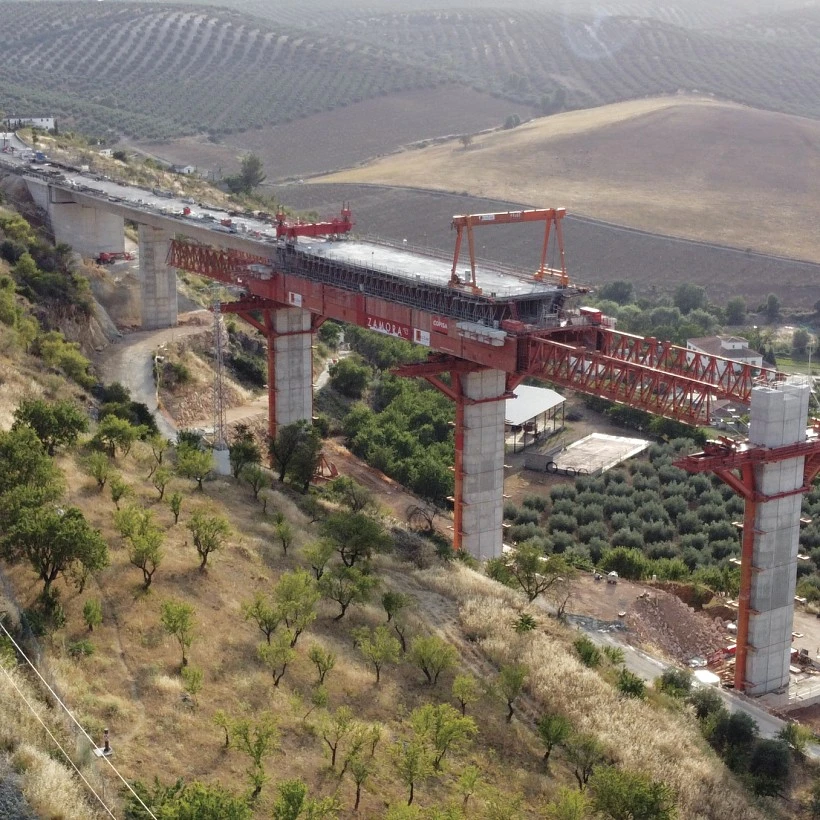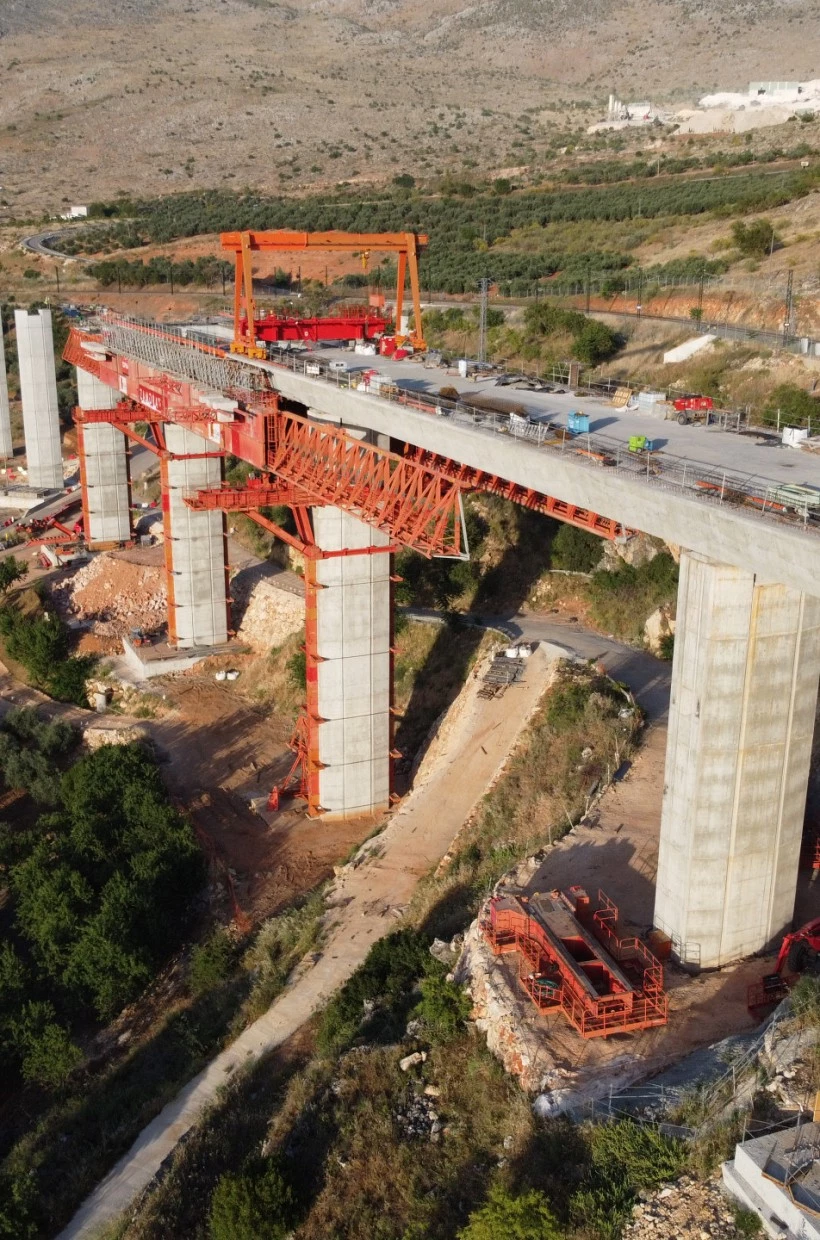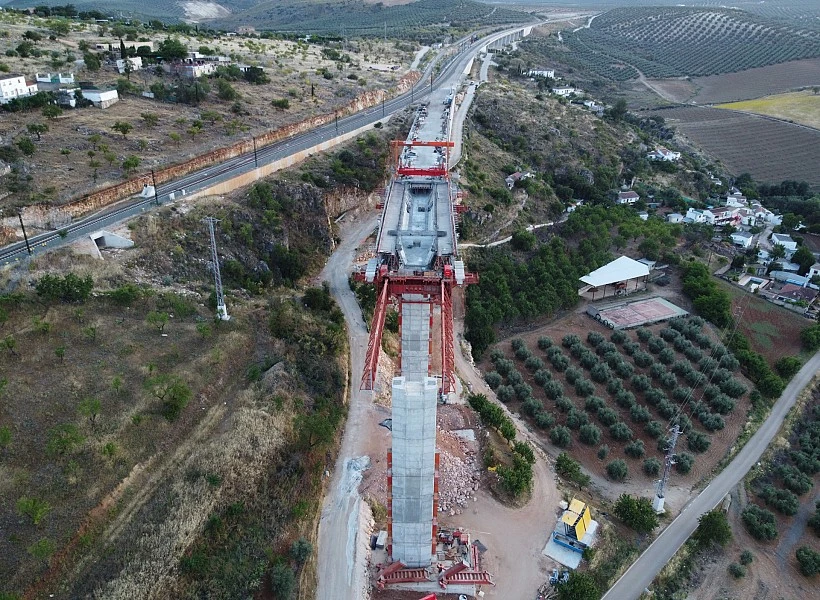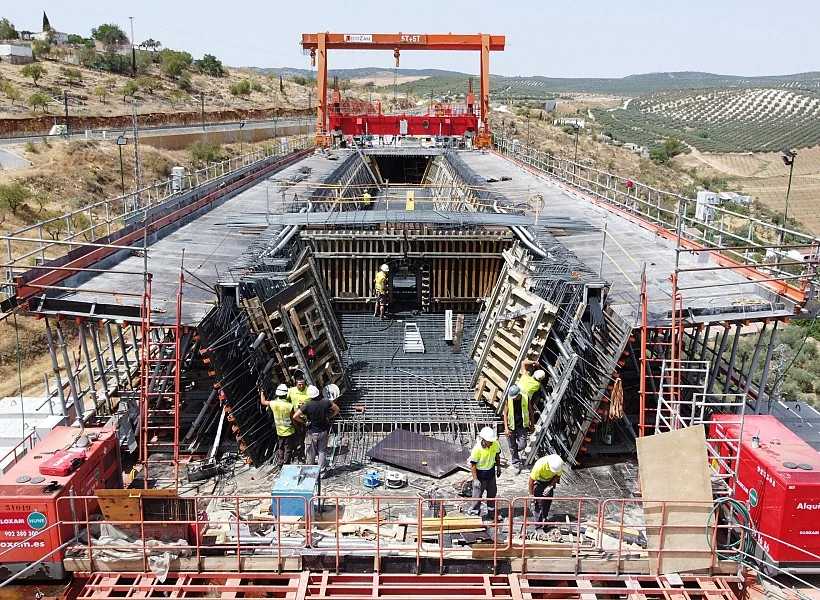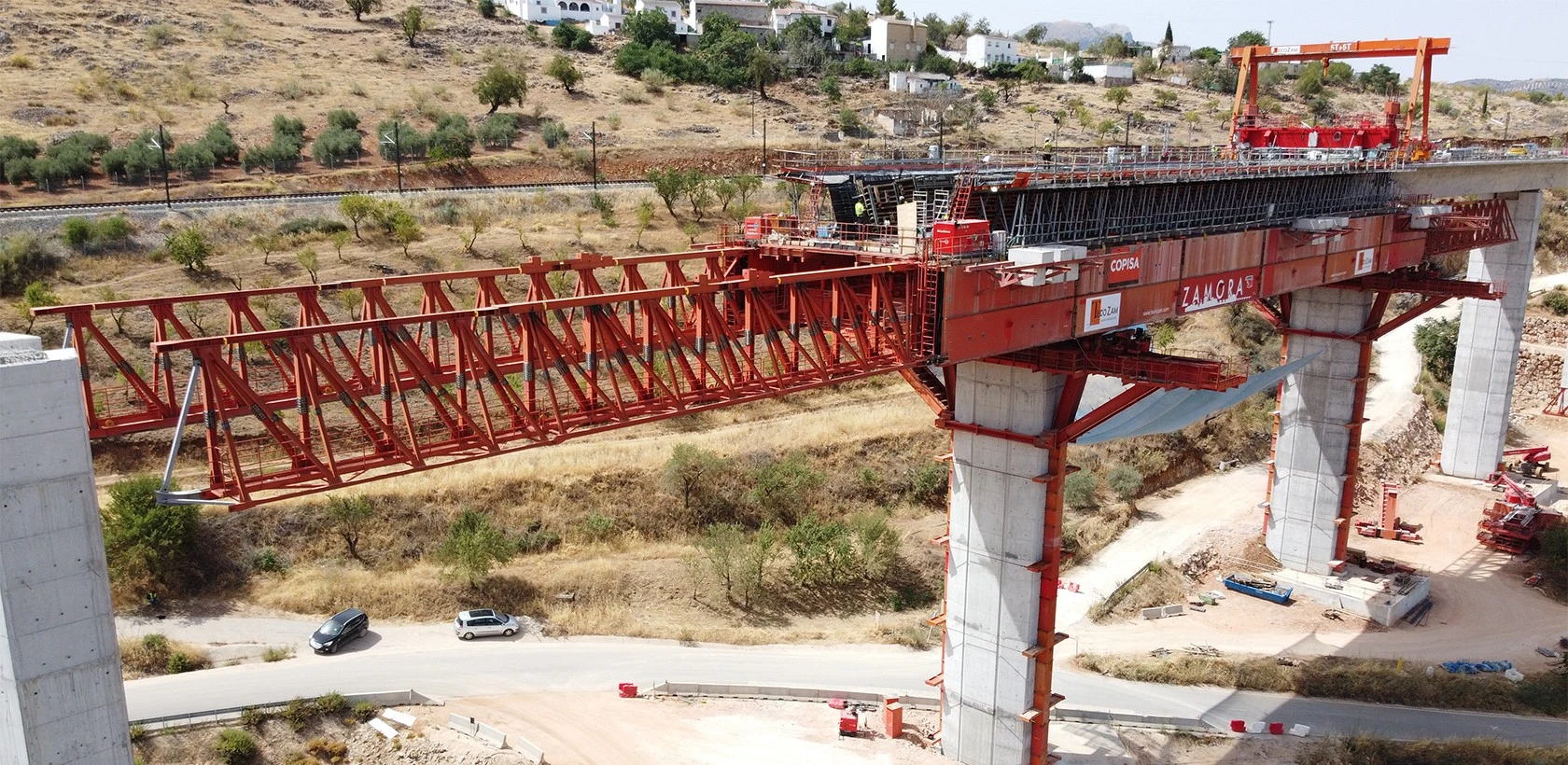The double-track railway Loja Viaduct is a concrete structure with a continuous edge single-cell box girder. It has a total length of 580 meters distributed in 12 spans, with a 50-meter-long standard span, a 14-meter-wide deck, and a maximum gauge of 35 meters.
Work Carried Out:
TECOZAM has built the viaduct deck using self-launching falsework with the exception of the last two spans, which were executed using centering falsework as it was impossible to continue using the former due to the existence, below the bridge, of a conventional railway track, still in service, which was going to be replaced by the bypass to which this viaduct belongs.
Singular Own Resources:
To build the deck of the viaduct, the ZAMORA I self-launching falsework was used, one of the three self-launching falsework that TECOZAM currently owns. This self-launching falsework was designed and manufactured by the Norwegian company NRS-AS for the construction of the MERSEY GATEWAY Viaduct (England) in 2017 and, after being acquired by TECOZAM, it has been used for the first time in Spain for the construction of this viaduct.
The self-launching falsework is located under the deck. It is designed to build decks with spans of up to 70 meters, although for this viaduct it was assembled in a smaller,130-meter-long configuration, given the characteristics of the structure (in its full configuration, it is 157 meters long). The falsework is supported by a provisional metallic system, fixed to the shafts of the viaduct piers, which is made up of a pair of corbels on which the machine rests and a pair of ground props, whose mission is to lower the loads from the machine to the foundation, thus avoiding loading the pier.
The weight of the empty falsework, with the configuration used in this project, is about 850 tons. The deck is built at the corresponding concreting level of the span set by surveying and, after completion, the entire self-launching falsework is lowered to the launching level, located about 30 centimeters below the previous level, to open the machine transversally and launch it longitudinally into the next span, where it will be closed again and raised to the new concreting level.
All these maneuvers are carried out by means of a complex and powerful hydraulic system.
